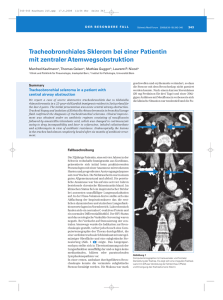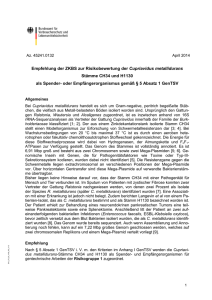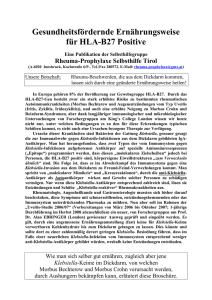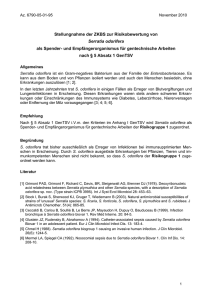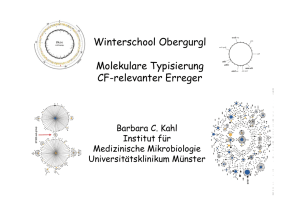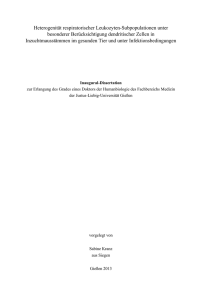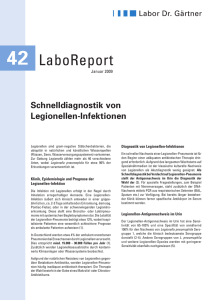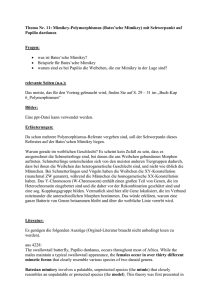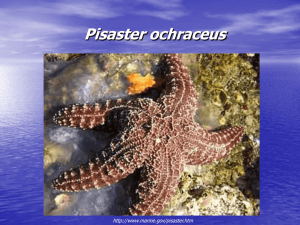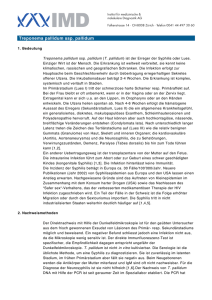Raoultella planticola
Werbung
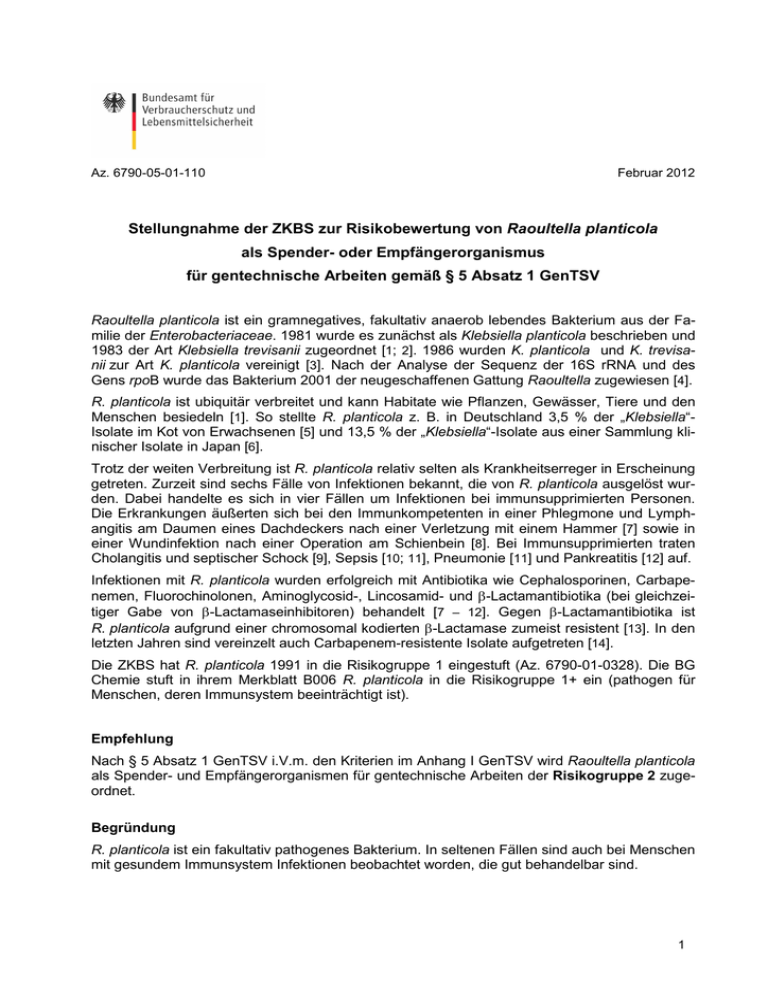
Az. 6790-05-01-110 Februar 2012 Stellungnahme der ZKBS zur Risikobewertung von Raoultella planticola als Spender- oder Empfängerorganismus für gentechnische Arbeiten gemäß § 5 Absatz 1 GenTSV Raoultella planticola ist ein gramnegatives, fakultativ anaerob lebendes Bakterium aus der Familie der Enterobacteriaceae. 1981 wurde es zunächst als Klebsiella planticola beschrieben und 1983 der Art Klebsiella trevisanii zugeordnet [1; 2]. 1986 wurden K. planticola und K. trevisanii zur Art K. planticola vereinigt [3]. Nach der Analyse der Sequenz der 16S rRNA und des Gens rpoB wurde das Bakterium 2001 der neugeschaffenen Gattung Raoultella zugewiesen [4]. R. planticola ist ubiquitär verbreitet und kann Habitate wie Pflanzen, Gewässer, Tiere und den Menschen besiedeln [1]. So stellte R. planticola z. B. in Deutschland 3,5 % der „Klebsiella“Isolate im Kot von Erwachsenen [5] und 13,5 % der „Klebsiella“-Isolate aus einer Sammlung klinischer Isolate in Japan [6]. Trotz der weiten Verbreitung ist R. planticola relativ selten als Krankheitserreger in Erscheinung getreten. Zurzeit sind sechs Fälle von Infektionen bekannt, die von R. planticola ausgelöst wurden. Dabei handelte es sich in vier Fällen um Infektionen bei immunsupprimierten Personen. Die Erkrankungen äußerten sich bei den Immunkompetenten in einer Phlegmone und Lymphangitis am Daumen eines Dachdeckers nach einer Verletzung mit einem Hammer [7] sowie in einer Wundinfektion nach einer Operation am Schienbein [8]. Bei Immunsupprimierten traten Cholangitis und septischer Schock [9], Sepsis [10; 11], Pneumonie [11] und Pankreatitis [12] auf. Infektionen mit R. planticola wurden erfolgreich mit Antibiotika wie Cephalosporinen, Carbapenemen, Fluorochinolonen, Aminoglycosid-, Lincosamid- und β-Lactamantibiotika (bei gleichzeitiger Gabe von β-Lactamaseinhibitoren) behandelt [7 – 12]. Gegen β-Lactamantibiotika ist R. planticola aufgrund einer chromosomal kodierten β-Lactamase zumeist resistent [13]. In den letzten Jahren sind vereinzelt auch Carbapenem-resistente Isolate aufgetreten [14]. Die ZKBS hat R. planticola 1991 in die Risikogruppe 1 eingestuft (Az. 6790-01-0328). Die BG Chemie stuft in ihrem Merkblatt B006 R. planticola in die Risikogruppe 1+ ein (pathogen für Menschen, deren Immunsystem beeinträchtigt ist). Empfehlung Nach § 5 Absatz 1 GenTSV i.V.m. den Kriterien im Anhang I GenTSV wird Raoultella planticola als Spender- und Empfängerorganismen für gentechnische Arbeiten der Risikogruppe 2 zugeordnet. Begründung R. planticola ist ein fakultativ pathogenes Bakterium. In seltenen Fällen sind auch bei Menschen mit gesundem Immunsystem Infektionen beobachtet worden, die gut behandelbar sind. 1 Literatur [1] Bagley ST, Seidler RJ, Brenner DJ (1981). Klebsiella planticola sp. nov.: a new species of Enterobacteriaceae found primarily in nonclinical environments. Current Microbiol. 6(2): 105-9. [2] Ferragut C, Izard D, Gavini F, Kersters K, De Ley J, Leclerc H (1983). Klebsiella trevisanii: a new species from water and soil. Int J Syst Bacteriol. 33: 133-42. [3] Gavini F, Izard D, Grimont PAD, Beji A, Ageron E, Leclerc H (1986). Priority of Klebsiella planticola Bagley, Seidler, and Brenner 1982 over Klebsiella trevisanii Ferragut, Izard, Gavini, Kersters, DeLey, and Leclerc 1983. Int J Syst Bacteriol. 36: 486-8. [4] Drancourt M, Bollet C, Carta A, Rousselier P (2001). Phylogenetic analyses of Klebsiella species delineate Klebsiella and Raoultella gen. nov., with description of Raoultella ornithinolytica comb. nov., Raoultela terrigena comb. nov. and Raoultella planticola comb. nov.. Int J Syst Evol Microbiol. 51(3): 925-32. [5] Podschun R, Ullmann U (1994). Incidence of Klebsiella planticola among clinical Klebsiella isolates. Med Microbiol Lett. 3: 90-5. [6] Mori M, Ohta M, Agata N, Kido N, Arakawa Y, Ito H, Komatsu T, Kato N (1989). Identification of species and capsular types of Klebsiella clinical isolates, with special reference to Klebsiella planticola. Microbiol Immunol. 33: 887-95. [7] O’Connell K, Kelly J, NiRiain U (2010). A rare case of soft-tissue infection caused by Raoultella planticola. Case Reports Med. pii: 134086. [8] Wolcott R, Dowd S (2010). Molecular diagnosis of Raoultella planticola infection of a surgical site. J Wound Care. 19(8): 329-32. [9] Yokota K, Gomi H, Miura Y, Sugano K, Morisawa Y (2011). Cholangitis with septic shock caused by Raoultella planticola. J Med Microbiol. doi:10.1099/jmm.0.032946-0. [10] Freney J, Fleurette J, Gruer LD, Desmonceaux M, Gavini F, Leclerc H (1984). Klebsiella trevisanii colonisation and septicaemia. Lancet. 1: 909. [11] Freney J, Gavini F, Alexandre H, Madier S, Izard D, Leclerc H, Fleurette J (1986). Nosocomial infection and colonization by Klebsiella trevisanii. J Clin Microbiol 23, 948–950. [12] Alves MS, Riley LW, Moreira BM (2007). A case of severe pancreatitis complicated by Raoultella planticola infection. J Med Microbiol. 56: 696-8. [13] Walckenaer E, Poirel L, Leflon-Guibout V, Nordmann P, Nicolas-Chanoine MH (2004). Genetic and biochemical characterization of the chromosomal class A β-lactamase of Raoultella (formerly Klebsiella) planticola and Raoultella ornithinolytica. Antimicrob Agents Chemother. 48(1): 305-12. [14] Castanheira M, Deshpande LM, DiPersio JR, Kang J, Weinstein MP, Jones RN (2009). First descriptions of blaKPC in Raoultella spp. (R. planticola and R. ornithinolytica): Report from the SENTRY Antimicrobial Surveillance Program. J Clin Microbiol. 47(12): 4129-30. 2
